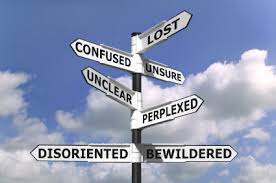
Stop Getting Those Last Few Hard SAT Math Questions Wrong
Today we are going to discuss how to stop getting those last few hard questions wrong. If you are a student currently scoring between a 650 and a 750 in SAT math and you want to get the best possible score, then this is probably one of your main concerns.
I first want to point out that the College Board determines the difficulty level of each SAT question by how many students got that question wrong on an experimental section from a previous SAT. So the reason that a question is appearing at the end of a math section may not have to do with the actual difficulty level of the question. All we know for certain is that one large group of students got this question incorrect. There are several possible reasons that so many students got this question wrong. These include:
(1) The question actually was very difficult
(2) The question was hard to understand
(3) The question was tricky
Simply practicing Level 4 and 5 problems will go a long way to handling the first and second point. Just do a few of these hard problems a day making sure that you reattempt the questions you get wrong every few days until you can get these questions right on your own. One place where you can find lots of hard SAT math questions to practice with is the Advanced Course from my 28 SAT Math Lessons series.
You may also want to review the following article on proper preparation: The Correct Way To Prepare For SAT Math
 Now let’s focus on the third point. One way to avoid being tricked is to always remember not to go with your first instinct on these hard problems. Review the following article for more information on this: Should You Go With Your First Instinct In SAT Math?
Now let’s focus on the third point. One way to avoid being tricked is to always remember not to go with your first instinct on these hard problems. Review the following article for more information on this: Should You Go With Your First Instinct In SAT Math?
Let’s discuss another way to avoid be tricked. Strong math students tend to fall into the trap of doing the last few math questions the same way that they would do them in school. If you are solving a more difficult SAT problem this way, very often you will fall into the test makers’ trap. Then, when you look over your answer, the mistake seems “obvious” and you just assume that it is a “careless error” (visit the following page to learn how to eliminate careless errors: Stop Making Careless Errors In SAT Math). Therefore you do not think about how the problem could have been done differently.
Unfortunately, this will keep happening over and over because those last few problems in the section are unique, and you will never see that particular problem again on an SAT. This is why it is very important to begin to practice solving these problems using SAT specific math strategies .
I want to emphasize that it is not enough to simply know these strategies. You must practice implementing them at the right times. As a very simple example, if question number 20 has variables in the answer choices, DO NOT try to solve this problem using algebra. Use the strategy of picking numbers instead. This particular strategy is very basic and involves substituting in specific numbers for the variables before solving the problem.
As an example, let’s look at the following problem.
There are b bricks that need to be stacked. After k of them have been stacked, then in terms of b and k, what percent of the bricks have not yet been stacked?

Since this is a percent problem we choose 100 for the total number of bricks. So b = 100. For k, let’s choose 25, so that 25 bricks have been stacked, and 100 – 25 = 75 have not been stacked.
Since we started with 100 as our total, 75% of the bricks have not been stacked. Remember to put a big, dark circle around 75%. We make the substitutions b = 100 and k = 25 into each answer choice.
(A) 100/7500 ≈ 0.0133% (≈ means “is approximately”)
(B) 7500/100 = 75%
(C) 10,000/25 = 400%
(D) 2500/100 = 25%
We now compare each of these percents to the percent that we put a nice big, dark circle around. Since (A), (C), and (D) are incorrect we can eliminate them. Therefore, the answer is choice (B).
Important note: (B) is not the correct answer simply because it is equal to 75%. It is correct because all of the other choices are not 75%. You absolutely must check all four choices!
As you can see, even basic strategies like picking numbers, taking guesses, plugging in answer choices, and drawing pictures can be extremely effective in hard problems. For an example of one of my more advanced strategies at work, watch the video below where I give a complete solution to another Level 5 SAT math problem.
Click Play In The Video Below To Learn An Advanced SAT Math Strategy
If you want to learn all of the strategies necessary to keep you from getting these last few difficult problems wrong, then you may want to check out my 28 SAT Math Lessons series. Each book in this series is targeted for students in a specific score range. Get the book for your score range and you will learn all the strategies you need to get to the next score level. In addition you will be provided with hundreds of practice problems all targeted specifically for you. Click on the pictures below for links to the books’ Amazon pages.
Click Play in the Video Below to Learn How Stop Getting Those Last Few Hard SAT Math Questions Wrong
Best of luck,

Dr. Steve
Get 800
P.S.: Here is a special offer on all of my SAT math prep books: SAT Math Prep Full Bundle




